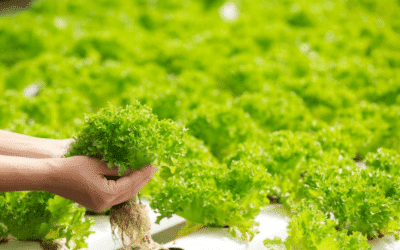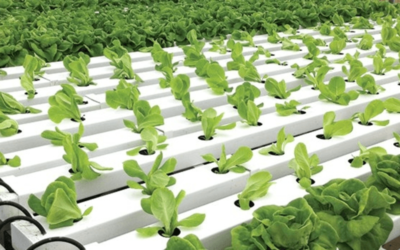What springs to mind when you hear the words ‘green homes’? Does it conjure up images of solar panels on the roof, a large rainwater harvesting tank in the garden and double-glazed windows? You’re not wrong, but that’s only half the picture.
Sustainable living is so much more than just reducing your reliance on the grid for your energy needs. It’s really a lifestyle that embraces the philosophy of living in a way that reduces your impact on the environment. And this extends to the inside of your home too. Even if you aren’t in a position to install alternative technologies for running your home, there are other ways to go green.
The Kitchen
Often considered the heart of the home, your kitchen is the perfect place to start adopting green habits:
- Cooking with gas: If you’re in the market for a new stove, you might want to think about investing in a gas cooker. LPG or Liquid Petroleum gas is an affordable, energy-efficient method of cooking that has become more popular. You’ll save time and money with a gas cooker because it heats up instantly.
- Bamboo counters: Remodelling your kitchen? Look at sustainable materials for your countertops. Bamboo is a good example because it grows so quickly and doesn’t need much water.
- Energy-efficient appliances: Check the energy star rating when you need to buy a new fridge, microwave oven, washing machine or dishwasher. Because these are the tools you use every day, it makes sense to make sure they’re energy efficiently.
- Make a full load: This advice applies to your dishwasher and your washing machine. Don’t waste time and energy washing a few items at a time. Rather wait until you have a full load of dishes or clothing and then hit the switch.
- Go with the flow: A low-flow aerator that is. Attached to your kitchen tap, this inexpensive little gadget can save you gallons of water.
- Waste not, want not: You’d be surprised just how much waste a kitchen generates. From plastic and cardboard packaging to food scraps, almost everything can be recycled. It just takes a little organisation. So set up different bins for each type of waste and get into the habit of separating your trash.
You don’t have to implement all of these tips in one go. Just start slowly and you’ll find that even the little changes will make a big impact.
The Bathroom
Aside from installing a solar water heater for your ablutions, you’d be amazed at the clever (and inexpensive) things you can do to make your bathroom an eco-friendly place.
- The number one tip is to install a low-flow shower head. It can reduce your water consumption by up to 30%. And you’ll still get clean.
- It also pays to watch the clock while you’re in the shower. Perhaps this isn’t the easiest advice to follow, but for large families, a little discipline can go a long way to saving on your water bill. Besides, five minutes is really all the time you need to get squeaky clean.
- Solar water heaters can be pricey so opt for the next best thing—insulating your geyser with a blanket. Proper insulation enables your geyser to retain heat better and this means big savings on your power consumption.
- And speaking of geysers, why don’t you try turning the temperature on the thermostat down while you’re installing the geyser blanket? You won’t notice the difference, and it’ll prolong the life of your geyser.
- Putting a brick in your toilet tank sounds like an odd thing to do, but it’s one of the most popular ways to save water in your bathroom. But be careful as bricks may disintegrate over time and damage the toilets flushing mechanism. Try filling up a plastic bottle with sand and water instead.
- Reusing the water from your bath to water your plants is a great way to ensure that not a drop is wasted. Just be sure to use eco-friendly soap, shampoo or bubble bath to limit the amount of toxins you put into the soil.
- It goes without saying that you should check for any leaking taps and fix them.
For such a small space, bathrooms can use a surprising amount of electricity and water. And these are the two resources where going green really counts. You don’t have to completely remodel your bathroom to go green. Just use your common sense and put the environment first.
The Living Room
You might not think that there are many things you can do to make your living room a haven of eco-friendliness. But here are some ideas that you’ll find cheap and simple to implement:
- Reclaim the sofa: This doesn’t mean you get to kick your spouse out of the most comfortable seat in the house. It means browsing the second-hand furniture shops for a bargain and using a bit of elbow grease to turn it into a one-of-a-kind original. You’d be surprised what you might find and it’ll give the chance to put your own stamp on it.
- Play a game of drafts: Check the spaces around your doors and windows for any air leaks. Then patch them up with silicone caulk or insulation strips. A well-insulated home is warmer in winter and cooler in summer.
- Unplug and unwind: How many electronics do you have in your living room? A TV, PVR and DVD player? What about your music system or laptop? Well if you’re not using them, get into the habit of switching them off at the plug. Even on standby mode, these gadgets can drain power.
- Go natural: When it comes to flooring, most carpets (with the exception of wool) are made from petroleum and treated with chemicals. So opt for natural flooring such as timber or even bamboo. You can always add a stylish pure wool rug to add a cosy feel in the colder months.
If you use your imagination you’ll find plenty of ways to add a green touch to your living areas. And when you decide to do some redecorating, keep your eye out for natural, eco-friendly paints and fabrics. Green can be trendy too.
The Bedrooms
You can use many of the green tips suggested for your living room in your bedroom too. Reclaiming small tables and transforming them into nightstands, switching off an electronic devices at the plug (except for your alarm clock, of course) and ensuring that the space is properly insulated all apply. But here are some extra ideas for you to try out:
- Cotton bedding: Organic cotton, bamboo, wool and other natural textiles are comfortable and eco-friendly. Skip the polyester pillows and treat yourself to buckwheat pillow instead. You’ll sleep like baby!
- Ditch the air-conditioner: Opt for a ceiling fan instead and open your windows slightly in the hot summer months. Air-conditioners consume a lot of electricity and there are better ways to cool your bedroom down.
- Choose non-VOC paint: Traditional paints contain volatile organic compounds (VOCs). These are harmful chemicals that leak into the air and may irritate the skin and mucus membranes. Thankfully there are eco-friendly alternatives available. This is a perfect example of how going green is good for people and the environment.
- Keep warm the old-fashioned way in winter by using a hot water bottle rather than an electric blanket. Although an electric blanket can be energy efficient, this only works if you can resist the temptation not to switch it off after you get into a bed. A hot water bottle on the other hand, will keep you warm into the night without drawing power.
Make your bedroom an eco-friendly space and you’ll sleep even better in the knowledge that you’re doing your bit to save the planet.
Then there are the little things that you can do for every room in the home to reduce you’re your impact on the planet such as:
- Switching from regular, incandescent light bulbs to compact fluorescent lamps (CFLs) and Light-emitting diode bulbs (LEDs). They use much less energy (up to 75% less) and they last longer too.
- Let ‘reduce, reuse, and recycle’ become your new mantra. Look for ways to cut down on the waste, find a new purpose for an old item and recycle paper, plastic, glass and tin whenever you can.
- When it comes to redecorating or remodeling areas of your home, look for organic products that are free of toxins. They’re not just better for the environment, they’re better for the health of your family too.
- Switch to organic cleaning products to keep your home looking at its best. They are slightly more expensive but often they work better so you don’t need to use as much. Or better still, try making your own. You’d be surprised how far you can get with simple things like baking soda and lemon juice.
- The same goes for your personal products. Soaps, creams and make-ups are available in eco-friendly alternatives. And they can be gentler on sensitive skins.
- Start a composting pile and grow your own vegetables. Remember those table scraps? Well this is the perfect way to put them to good use. And you can cut down on your grocery bill at the same time.
- Support local businesses, especially those that offer eco-friendly alternatives. Buying local is a great way to reduce your carbon footprint.
Of course the ultimate green home incorporates features that enable you to live almost entirely off the grid. Retrofitting an existing home with these features is possible, can be difficult and more expensive. It is possible to buy a new home that has all the eco bells and whistles you could possibly want.
Green home builders should specialize in photo-voltaic solar panels, underground rainwater harvesting tanks and a hydronics radiant heating and cooling system. Also insulation and use of natural materials to create a truly green home is of utmost importance.
Going green is really about changing the way you think. Once you become aware of how much waste a home can generate, it gets easier to find ways to avoid contributing to the problem. For example, taking your own bags to the grocery and car-pooling to work. And you’ll find that adopting green habits helps you cut down on your monthly expenses.
So if you haven’t already started, use this guide to help you turn your home into a green haven. You’ll feel better and you’ll have more money at the end of every month. That means you’ll be able to start saving towards something bigger such as a solar water heater or photo-voltaic solar panels that will help you save even more. Any home can be a green home, you just have use your imagination.








